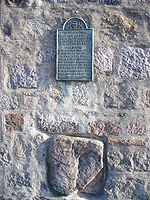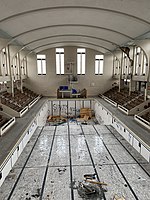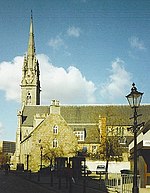Battle of Aberdeen (1644)
1644 in ScotlandBattles of the Scottish Civil WarConflicts in 1644EngvarB from March 2020History of Aberdeen

The Battle of Aberdeen, also known as the Battle of Justice Mills and the Crabstane Rout, was an engagement in the Wars of the Three Kingdoms which took place outside the city of Aberdeen on 13 September 1644. During the battle, Royalist forces led by James Graham, Lord Montrose routed an army raised by the Covenanter-dominated Parliament of Scotland under Robert Balfour, 2nd Lord Balfour of Burleigh. The battlefield was assessed to be inventoried and protected by Historic Scotland under the Scottish Historical Environment Policy of 2009, but it failed to meet one or more of the criteria.
Excerpt from the Wikipedia article Battle of Aberdeen (1644) (License: CC BY-SA 3.0, Authors, Images).Battle of Aberdeen (1644)
Willowbank Road, Aberdeen City City Centre
Geographical coordinates (GPS) Address Nearby Places Show on map
Geographical coordinates (GPS)
| Latitude | Longitude |
|---|---|
| N 57.14101 ° | E -2.10668 ° |
Address
Willowbank Road
Willowbank Road
AB11 6XJ Aberdeen City, City Centre
Scotland, United Kingdom
Open on Google Maps







